This post may contain affiliate links, which means I’ll receive a commission if you purchase through my links, at no extra cost to you. Please read full disclosure here.
A syllable block in Hangeul refers to the way individual letters (consonants and vowels) are grouped together to form a syllable. Each syllable in Korean is written as a single, compact block that combines consonants and vowels.
A syllable block usually consists of:
- An initial consonant (초성, choseong): This is the first letter in the block.
- A vowel (중성, jungseong): This follows the initial consonant.
- A final consonant (받침, batchim): This appears at the bottom of the block if present.
For example:
- 가 (“ga”) is a syllable block where ㄱ (g) is the initial consonant, and ㅏ (a) is the vowel.
- 감 (“gam”) is a syllable block with ㄱ (g) as the initial consonant, ㅏ (a) as the vowel, and ㅁ (m) as the final consonant or batchim.
Each block is arranged so that it fits within a square shape, making Korean writing neat and uniform.









